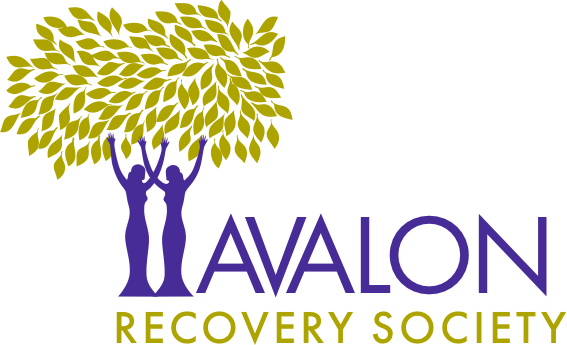
Avalon is proud to recognize and celebrate the diversity of women in our community and amplify their voices and perspectives using our blog as a key platform. Today, we acknowledge National Indigenous Peoples Day in Canada. In what follows, we will discuss addiction in the context of Indigenous Canadians (including histories and statistics), and speak on diversity and inclusion at Avalon.
Background
On March 14, 2016, Statistics Canada published a fact sheet reporting that 35% of off-reserve Indigenous people were classified as heavy drinkers, compared to 23% of non-Indigenous individuals. This study by the Correctional Service of Canada, on average, Indigenous women first tried alcohol at a younger age (13) compared to non-Indigenous women (16). Furthermore, they found that a greater proportion of Indigenous women than non-Indigenous women had an identified substance use issue (94% vs. 71%). Indigenous women were also more likely to have a moderate or substantial to severe substance use issue. The chart below (?) shows this graphically, using data collected through the Women’s Computerized Assessment of Substance Abuse (W-CASA) from February 2010 to February 2014.
The use of drugs amongst Indigenous women is a serious health concern in Canada. In Canada, Indigenous women experience disproportional rates of family violence, poverty, discrimination, sexual harassment, and low health status. They also report being impacted by the historical and intergenerational effects of colonization, such as complex losses including the loss of traditional culture and lands, forced removal from families, and the residential school system. For many women, substance abuse is used as a coping mechanism to deal with trauma including partner violence, childhood abuse, and the intergenerational effects of colonization. Moreover, access to adequate health care and preventative services is problematic for Indigenous women, with many Indigenous women experiencing numerous invalidating encounters and negative stereotypes about them as Indigenous women with addiction issues.
Understanding
A gap in knowledge and understanding exists around the process of women healing from problematic drug use and how that is impacted by their views of themselves and the stigmas that come with being Indigenous.
This study recommends an Indigenous worldview approach to integrated treatment. Within this perspective, substance abuse is recognized as an aspect of mental wellness, understood as the well-being of individuals and their communities. The individual is not seen as separate from the community in which they identify, and is interdependent with the well-being of the collective (which includes family, offspring and land) — somewhat opposite of the dominant Western worldview which is individualistic and focuses on personal autonomy.
One major concern for Indigenous women who are trying to access addiction treatment in Canada is the availability of culturally-appropriate services. A national study sampled six National Native Alcohol and Drug Abuse Program (NNADAP) centres on important skills and characteristics of clinicians who aid First Nations women with substance abuse issues. The findings from interviews with female clients and staff were similar, and identified the following as helpful part of treatment and recovery: recognizing the impact of trauma (including intergenerational effects of colonialism and violence); demonstrating care and empathy for women — especially regarding loss of custody of children; open communication; supporting the link to Indigenous spirituality, culture, healing traditions and teachings; being accepting and non-judgmental; providing inspiration by acting as a role model, and; acknowledging the past and assisting in moving toward a healthier future.
Diversity at Avalon
You’ve likely heard us say this before and it continues to ring true — diversity is an important leading principle at Avalon, and we do our best to build safe environments and to facilitate open and non-judgmental conversations. Our recovery services are available to all self-identifying women, regardless of cultural or ethnic background. Today, as we encourage you to do, we will be further educating ourselves on Indigenous culture, history and traditions, learning about the ongoing issues and traumas experienced in the Canadian context, and reflecting on how we can better support and reach out to Indigenous women who may need addiction and recovery services. If you have any thoughts, ideas or comments, please feel free to email or phone an Avalon Centre.
What you can do
Education is key. Below are some resources and organizations that can use your support:
Native Women’s Association of Canada
Indspire – National Indigenous registered charity that invests in the education of First Nations, Inuit and Métis people
Legacy of Hope – National Indigenous charitable organization with the mandate to educate and create awareness and understanding about the Residential School System
True North Aid – Serve and support northern Indigenous communities in Canada through practical humanitarian support
5 Ways You can Educate Yourself and Support Indigenous Communities in Canada – Global Citizen
16 things Canada can do NOW to end violence against Indigenous women and girls – Amnesty International Canada
Indigenous Firsts: 14 Indigenous Women to Know on National Indigenous Peoples Day – Canadian Women’s Foundation
In summary
Addiction is complicated, complex, and extremely challenging. If substance abuse is the end result, the catalyst could be childhood abuse, poverty, relationship issues, mental health, etc. For Indigenous women, these issues are compounded by particularly difficult lived experiences and histories. Avalon offers life-changing recovery services to women and we encourage you to reach out at any time you have questions or wish to learn more about our services. We look forward to welcoming you with open arms to our supportive, non-judgmental and inclusive community! Our full meeting schedule can be found here.
Sources
https://www.ncbi.nlm.nih.gov/pmc/articles/PMC4072643/
https://www.ncbi.nlm.nih.gov/pmc/articles/PMC4071056/
https://www150.statcan.gc.ca/n1/pub/89-656-x/89-656-x2016007-eng.htm
